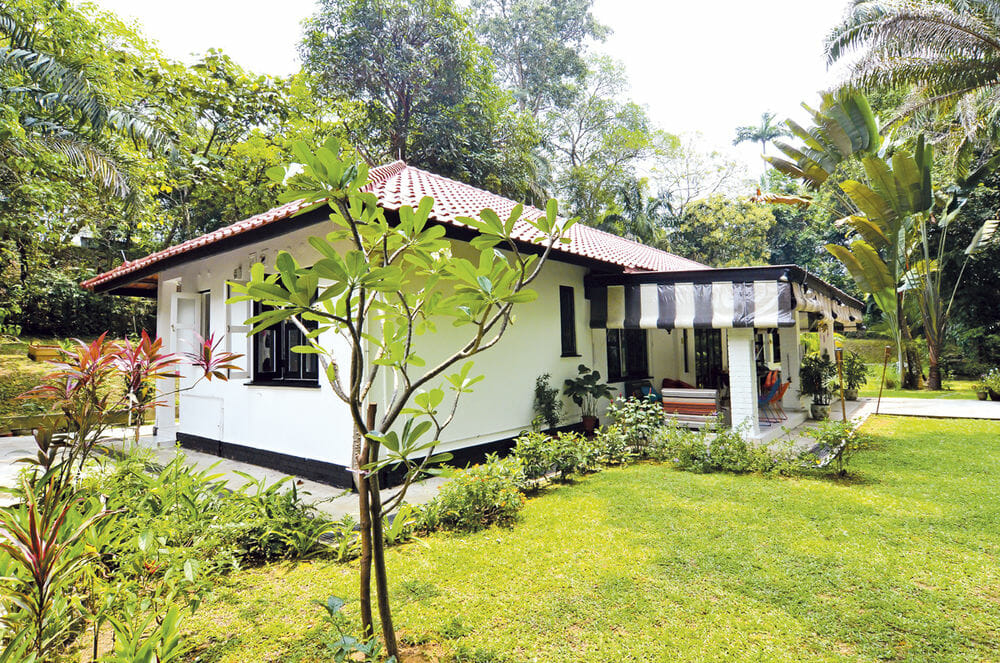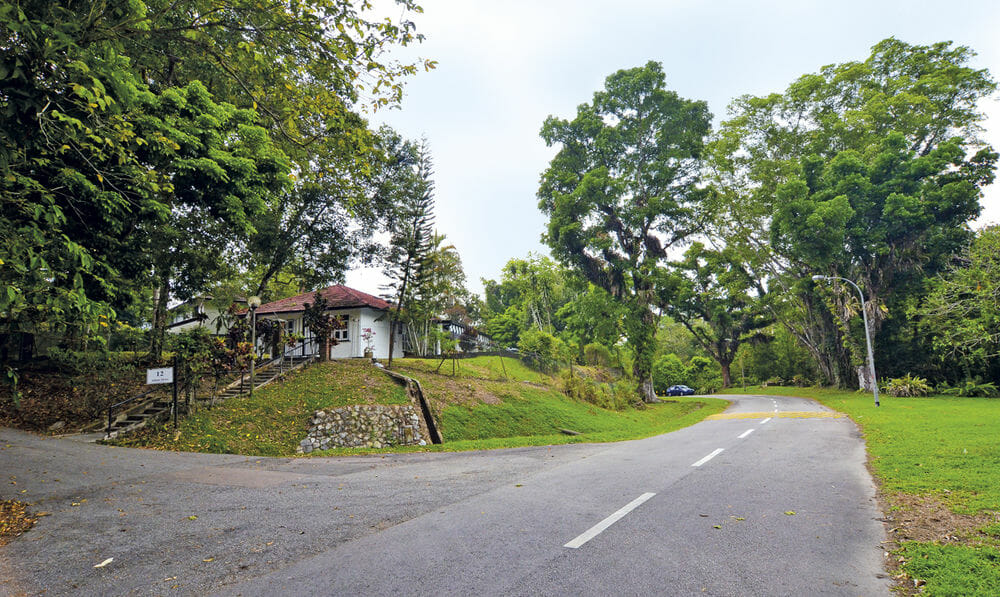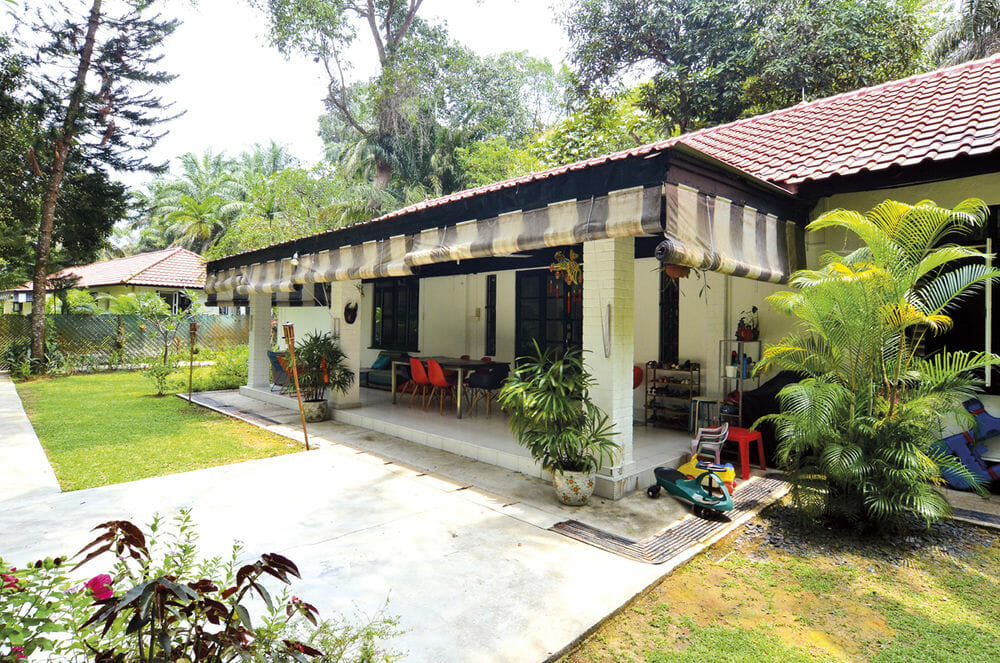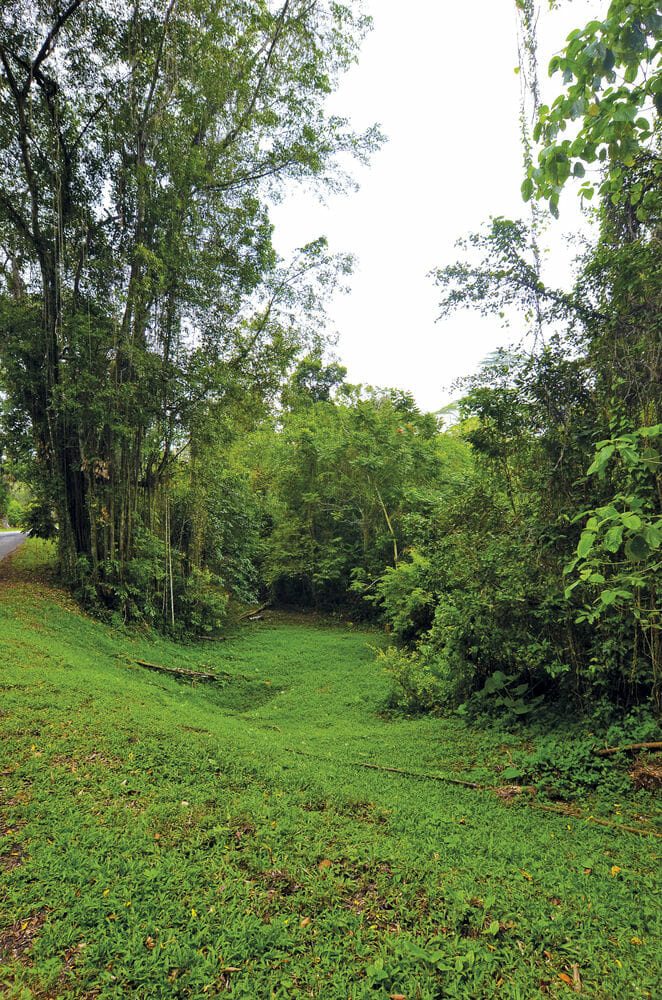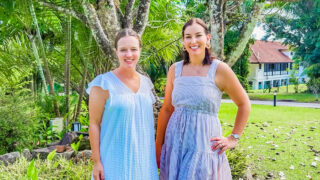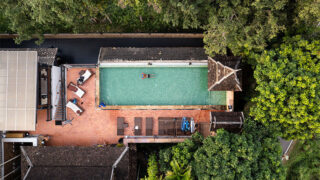The area of Sime Road in Singapore has a remarkable history as a former Second World War headquarters and camp. It was originally used by British troops, before being taken over by the Japanese military and used as a camp for prisoners of war.
In this two-part feature, we meet KARIEN VAN DITZHUIJZEN – an expat resident from the area – who has spent a lot of time compiling research into this fascinating period. We also interview JON COOPER, who has carried out archaeological work on Sime Road Camp and the Adam Park battleground.
The history of Singapore and my neighbourhood
By Karien Van Ditzhuijzen
I always like a place with a bit of history. Shining marble, slabs of steel and concrete do not excite me much. I prefer old things, coloured with the patina of time, their cracks and scars telling their stories. With our current house, I got more than even I bargained for: it has an intriguing story to tell.
I had of course heard rumours that some of the black-and-white enclaves had been used to house POWs. One day, in bed with feverish flu, I was reading a novel about a woman interned in a Japanese camp on Sumatra. I pictured myself lying in that same spot, perhaps on the floor, ill with malaria and a Japanese guard marching past the window.
After I’d recovered from flu, that image of myself held captive in this house haunted my thoughts. It made me wonder: had women like me perhaps been imprisoned here during the war, even perhaps in this house? During the occupation, a European “expat wife” would have been the enemy of Japan. I would have been interned.
What I discovered
When Singapore fell, both civilian prisoners and POWs were sent to Changi prison. Several black-and-white houses had held groups of military prisoners at different times during the war, but I couldn’t find details of what happened on Adam Drive.
My search led me to Jon Cooper. This British historian has done a lot of archaeological research into the battle of Adam Park, another black-and-white enclave just across the motorway from us. When I met up with him, he explained why I hadn’t been able to find out more about Adam Drive. The name of the road had changed: during the War, the area was known as Sime Road Camp.
In the lead-up to war, the British armed forces started to build shared headquarters on Sime Road. I can see Sime Road from our back garden; in fact, I can hear its traffic from my desk. They also started building new houses for their officers. However, the Japanese occupied Singapore before these houses had been finished. Only the concrete platforms and drains had been realised.
The commander of the British troops, General Percival, and his staff had to abandon their new headquarters. They retreated to Fort Canning not long before they surrendered to the Japanese. If I climb to the highest point of our garden, and stand on my toes, I can see the outbuildings of these British military headquarters during the war. They called it the Green House. It became the headquarters of the Japanese Camp Commander in Singapore during the occupation.
Prisoners on the move
Before long, both British and Australian POWs were moved from Changi Prison to Sime Road. They were set to work building a Shinto shrine in nearby MacRitchie Reservoir, to commemorate Japanese casualties. They lived in huts they built themselves from wood and attap, on the same concrete platforms that the British had built before the invasion. After about nine months, most of these prisoners were sent to work on the Thai-Burmese railway.
In the last years of the war, the Japanese decided to move all civilian internees from the overcrowded Changi Prison to the fresh air and greens hills of Sime Road. The road where these houses are is now called Adam Drive, and I live in one of them.
The women of Sime Road Camp
Not only that, but a map of Sime Road Camp shows clearly that our house was in the women’s camp. It stands where hut number 10 previously stood. My dream had not been far from the truth: European women like myself had been interned here during the war.
Diary of a Girl in Changi by Sheila Allen, a young Eurasian who was interned in both Changi Prison and Sime Road Camp, describes the relatively good circumstances in the Singapore camps compared to the Sumatran camps I have read about. There was electricity, and hot running water. The women busied themselves with organising concerts, a school, Christmas parties. Limited contact with the men was possible, and some babies were born. Yet life was extremely hard and uncertain, food rations were very low, and many died of malnutrition and disease.
Walking around Adam Drive now, I see it with different eyes. My mind erases the trees that now cover the previously open and grassy valley. Everywhere I look, I try to place the photographs I’ve seen of the camp and the settings of the accounts I have read. In place of the houses, I imagine wooden huts. I picture a farm at the spot where my kids play on the swings. I plot the image of the Flying Dutchman pub over the carport that is now in its place. The work of Jon and his team is ongoing, and they’ve found some new researchers in me and my family. Who knows what else we will unravel about the history of Singapore and my neighbourhood?
An interview with Jon Cooper
By Verne Maree
Sime Road was the Command and Control Centre for the RAF in Malaya, says Jon about this fascinating historical area. Both Adam Park and Sime Road became work camps in 1942: “After dumping a load of Australian POWs in Adam Park, the trucks carried on up the road and left the Brits in Sime Road. They rebuilt the attap huts that had been used by the RAF for accommodation, as they’d been badly damaged in the fighting.”
As Karien says, only some of the houses had been built. Others consisted only of drains and platforms. Jon explains that’s because there was such a rush to get the command centre up and running. “We’re not sure how many had been built in the first phase; but when houses are rebuilt, it’s always cheaper to rebuild them on existing platforms. So, while the platform of Karien’s home is pre-war, its construction is post-war.”
At the end of 1942, when the POWs were sent off to work on the Thai-Burma railway, it seems that Sime Road Camp stood empty for a while. The POWs who started coming back in 1943 stayed just long enough to rebuild the houses and build a chapel, before being moved to Changi Prison. On the interior walls of the Sime Road Camp huts, they inscribed a heart-wrenching list of the few men who had survived the work in Burma and Thailand, and another of those who had not made it.
Civilian internees
The civilian internee story is a distinctly separate period that kicks off on 1 May 1944 and ends only with the end of the war in September 1945. A post-war account in The Western Australian describes the first 900 men arriving with “their wretched bundles”, taking possession of the 50-acre plot: “from the remains of destroyed RAF huts they built their communal dormitories and kitchens”. The women followed later.
There are a number of books by civilian internees – apart from Diary of a Girl in Changi by Sheila Allen, In the Shadow of the Rising Sun by Mary Thomas and Within Changi’s Walls by George L. Peet poignantly document the civilian internee experience, first at Changi and then at Sime Road.
Though the internees were primarily British and Australian, there were also French, Dutch, South African, Russian, Norwegian, Polish, Maltese, Irish, French, Greek, Indian, Iranian, Danish and other prisoners.
The women, having been captured in civilian dress, were then treated as civilian internees. But it was a different scenario for many of their husbands, who had joined the local volunteer units and were in uniform. Though in fact civilians in Singapore, they were treated in the harsher manner meted out to POWs.
Camp life
By the end of the war, the population of the camp included about 3,000 men, 1,000 women and more than 300 children. And for a so-called “forgotten army fighting a forgotten campaign”, says Jon, life in the camp is actually very well documented.
Contemporary accounts of camp life make for fascinating reading: “You put 4,000 people into a place like this, and you get fighting, cliques, sexual liaisons and romantic intrigues, theft, comedy, musical and theatrical shows, gardening, escape attempts and everything else that humans get up to in communities.”
Interestingly, Sime Road Camp continued as a refugee camp for up to nine months after the end of the war, mainly for the local Eurasian and Jewish ex-internees who had been moved to the camp during the latter part of the war and did not immediately have homes to go back to.
The Green House
The Green House in Sime Road was built around 1938 for Air Marshall Sir Robert Brooke-Popham, but was soon taken over for administration purposes. “So, all those famously bad military decisions were made here at Sime Road, not at the Battle Box as some people tend to think!”
Since the 1950s, it has been painted white and has been owned and lived in by a Singaporean family. The outbuildings were where the guards, both Japanese and Sikh, lived.
“There are lots of concrete structures, bunkers and tunnels around it to be explored,” says Jon with a glint in his archaeological eye. “Archaeologically speaking, it has a similar pedigree to its neighbour, Adam Park.”
The history of Singapore is enthralling. And it’s a history that’s continuously being added to by the work of both locals and expats. These include trained historians like Jon, but also keen enthusiasts who contribute their time and effort to archaeological digs, museum guiding and more. A visit to a museum is a great way not only to while away an afternoon, but to give you an added appreciation for the country and its people.
For more great info on life in Singapore, head here.
The expat’s guide on where to live in Singapore
What’s new in town: art festivals, kids activities and more

